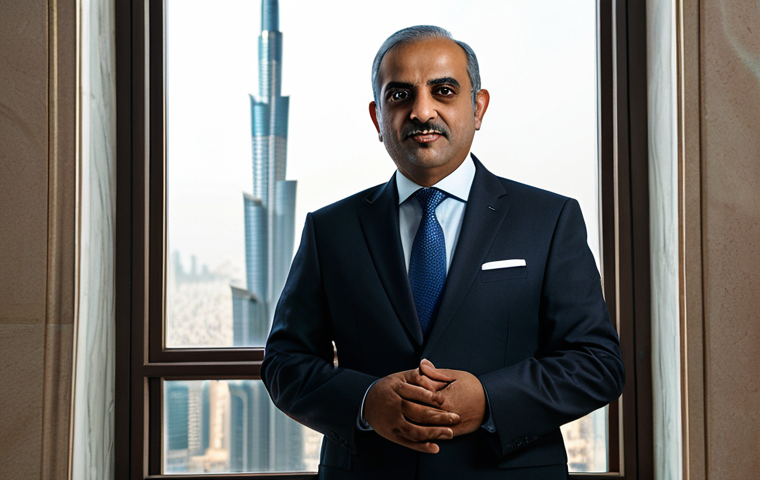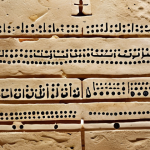It feels like we’re constantly on the precipice of something groundbreaking, doesn’t it? Just when you think you’ve wrapped your head around the latest tech, another innovation pops up, reshaping everything we thought we knew.
I’ve personally seen how artificial intelligence, once a distant sci-fi concept, has rapidly woven itself into the fabric of our daily lives, from personalized recommendations to automating complex tasks.
This isn’t just about efficiency; it’s fundamentally altering industries, job markets, and even how we interact. What truly excites me, and frankly, keeps me up at night sometimes, is pondering the next wave – perhaps truly sentient AI or breakthroughs in sustainable energy that could completely redefine geopolitics.
The shift is palpable, demanding constant re-evaluation of our strategies and perspectives. And speaking of shifting landscapes, the intricate political tapestry of the Arab world is a prime example of a region perpetually navigating historical legacies, resource dynamics, and evolving global interests.
It’s a place where every decision, every diplomatic maneuver, feels weighted with immense significance, often impacting global stability and energy markets directly.
Frankly, understanding the underlying currents – the aspirations for self-determination, the challenges of governance, and the persistent external influences – can feel like trying to untangle a Gordian knot.
It’s far more complex than the headlines often suggest, requiring a nuanced perspective. Let’s find out precisely!
Unpacking the Historical Sands of Enduring Influence

It truly feels like to understand anything about the present, especially in a region as historically layered as the Arab world, you simply have to dig into its past.
I’ve personally found that the echoes of empires, the carve-up of territories by colonial powers, and the initial fervent dreams of pan-Arab unity still reverberate through every major decision and regional dynamic today.
It’s not just academic history; it’s a living, breathing undercurrent that shapes national identities, internal politics, and external relations. From my perspective, trying to analyze current events without this historical lens is like reading a single page from a very long, epic novel – you’re missing all the vital context that explains why characters behave the way they do, or why certain conflicts seem to recur.
The Sykes-Picot Agreement, for example, isn’t just a historical footnote; its legacy of artificial borders and divided communities continues to fuel identity crises and regional instability, shaping sentiments and allegiances in ways that many outside the region often struggle to grasp.
You see these historical tensions playing out in national narratives and even in the subtle nuances of diplomatic language. This deep dive into history isn’t about being stuck in the past, but about understanding the very foundations upon which modern challenges are built.
1. The Lingering Shadows of Colonial Legacies
The imprint left by European colonial powers on the Arab world is undeniable, and frankly, it’s far more profound than just drawing arbitrary borders on a map.
When I look at the governance structures, economic systems, and even some societal divisions in various Arab nations, I can clearly see the direct lineage to decisions made in London, Paris, or Rome decades, if not a century, ago.
These legacies created a cocktail of challenges: weak state institutions, economies often designed to serve external rather than internal needs, and artificial national identities that often clashed with existing tribal or sectarian allegiances.
It’s a complex tapestry, and what strikes me most is how deeply ingrained these structures became. They weren’t just temporary impositions; they fundamentally reshaped political discourse and economic pathways, creating dependencies that many nations are still grappling with today.
I’ve read countless analyses and spoken to people who live in these areas, and the sentiment is consistent: the past isn’t just past, it’s very much present in the daily struggles for self-determination and sustainable development.
2. The Rise and Retreat of Pan-Arabism
For a significant period, particularly after World War II, the dream of a unified Arab nation, a singular identity transcending individual states, captivated the hearts and minds of millions across the region.
Leaders like Gamal Abdel Nasser embodied this powerful vision of pan-Arabism, promising collective strength, liberation from external influence, and a shared destiny.
I remember being fascinated by the sheer ambition of it – a grand narrative that sought to overcome the divisions imposed by colonialism. Yet, as history unfolded, this dream, for various reasons, largely receded.
The failure of political unions, the rise of distinct national interests, the internal conflicts, and the pressure from external powers all contributed to its decline.
What remains, however, is a strong cultural and linguistic kinship, an underlying shared identity that, while not manifesting in political unity, still fosters a sense of collective consciousness.
It’s a fascinating dichotomy: politically fragmented, yet culturally connected, and this tension often plays out in regional diplomacy and public sentiment.
The Hydrocarbon Heartbeat and Global Geopolitics
It’s almost impossible to discuss the Arab world without acknowledging the colossal role that oil and natural gas play. From my perspective, it’s the region’s economic lifeblood, but it’s also a major source of complex geopolitical entanglements.
I’ve observed firsthand how the vast reserves of hydrocarbons have transformed landscapes, created immense wealth, and propelled some nations onto the global stage with disproportionate influence.
But it’s not a simple story of prosperity; it’s a double-edged sword. This wealth has undeniably funded monumental development projects and lifted millions out of poverty, yet it has also fueled internal power struggles, attracted external interventions, and in some cases, inhibited the development of more diversified economies.
The global demand for energy means that the region’s stability is intrinsically linked to global energy prices and international security, making it a constant focal point for world powers.
I often find myself thinking about the delicate balance leaders in these nations must strike – leveraging their natural resources for national development while navigating the intense pressures and expectations from both internal populations and the international community.
1. Energy Wealth: A Catalyst for Development and Dependency
The sheer scale of oil and gas wealth in the Arab Gulf states, in particular, has allowed for rapid modernization and the establishment of impressive infrastructure.
I’ve seen cities rise from the desert, propelled by the revenues generated from these vital resources. This wealth has funded education, healthcare, and ambitious diversification projects, transforming societies at an unprecedented pace.
However, this reliance on a single commodity also creates a significant vulnerability. Fluctuations in global oil prices can have immediate and dramatic impacts on national budgets and economic stability.
Furthermore, it can create a ‘rentier state’ dynamic where governments are less reliant on taxation from their citizens, potentially impacting the social contract and the development of robust civic institutions.
It’s a tightrope walk: leveraging the incredible advantage of natural resources while trying to build a resilient, diversified economy for a post-oil future.
2. The International Scramble for Influence
Given the region’s critical role in global energy supply, it’s no surprise that it has historically been, and continues to be, a battleground for international influence.
Major world powers are constantly vying for access, alliances, and stability in the region. I’ve witnessed how this dynamic plays out – from military bases and arms deals to diplomatic maneuvering and economic partnerships.
This external interest can, at times, complicate internal political processes, as nations find themselves caught between competing global agendas. It’s a high-stakes game where regional conflicts can quickly escalate into international crises, and the stability of the global energy market often hinges on the delicate balance of power in key Arab states.
My sense is that understanding the motivations of these external actors is just as crucial as understanding the internal dynamics when trying to make sense of the region’s complex geopolitical landscape.
Navigating the Currents of Societal Transformation
The Arab world is often portrayed through a narrow lens, but from my experience, it’s a vibrant mosaic of societies undergoing profound and rapid transformation.
Beyond the headlines of conflict or oil wealth, there’s a powerful narrative of demographic shifts, digital adoption, and evolving social values that is reshaping daily life.
I’ve personally been struck by the sheer energy of the youth bulge, a generation that is more connected, more educated, and increasingly vocal about their aspirations.
This isn’t just a demographic fact; it’s a massive force for change, demanding better opportunities, greater representation, and a more inclusive future.
The internet and social media, in particular, have been game-changers, enabling new forms of communication, activism, and cultural exchange. While traditional values remain strong in many areas, there’s a palpable shift occurring, particularly in urban centers, as societies grapple with the challenges and opportunities of modernity.
It’s a dynamic tension, a fascinating interplay between tradition and progress, shaping everything from family structures to public discourse.
1. The Youth Bulge: A Demographic Tsunami of Potential
One of the most striking features of the Arab world is its predominantly young population. Millions of young people are entering the workforce annually, bringing with them a hunger for education, innovation, and change.
I’ve had conversations with countless young Arabs who are incredibly ambitious, tech-savvy, and eager to contribute to their societies. However, this demographic dividend also presents significant challenges.
High youth unemployment rates, limited opportunities, and a sense of disillusionment can create considerable social and political pressure. My observation is that how these nations address the aspirations and frustrations of their youth will largely determine their future stability and prosperity.
It’s a critical juncture, where investing in education, fostering entrepreneurship, and creating meaningful pathways for engagement are absolutely vital.
2. Digital Revolution and Shifting Social Narratives
The proliferation of smartphones and internet access has fundamentally altered how people in the Arab world connect, consume information, and engage with the world.
Social media platforms, in particular, have become powerful arenas for public discourse, cultural expression, and even social activism. I’ve seen firsthand how conversations that were once confined to private spaces are now playing out in the digital public square, enabling new forms of collective identity and challenging traditional narratives.
This digital revolution isn’t without its complexities; it raises questions about censorship, misinformation, and the preservation of cultural identity in an increasingly globalized digital landscape.
Nevertheless, it’s an undeniable force, reshaping social norms, empowering new voices, and accelerating the pace of social change across the region.
Regional Power Dynamics and Intra-Arab Rivalries
When I look at the political map of the Arab world, what immediately strikes me is the intricate web of alliances, rivalries, and competing interests that define inter-state relations.
It’s far from a monolithic bloc; instead, it’s a dynamic chessboard where various actors vie for influence, security, and economic advantage. I’ve observed how historical grievances, ideological differences, and divergent foreign policy objectives often fuel these rivalries, leading to proxy conflicts and diplomatic standoffs.
Yet, amidst these tensions, there are also instances of surprising cooperation and pragmatic alliances, often driven by shared threats or economic imperatives.
Understanding these shifting regional power dynamics is crucial, because they directly impact everything from peace initiatives to economic integration, and sometimes, even the stability of individual nations.
It’s a constantly evolving landscape where yesterday’s allies might be tomorrow’s rivals, making predictions incredibly challenging.
1. Competing Visions for Regional Hegemony
Several regional powers within the Arab world harbor ambitions for greater influence, each with its own vision for the region’s future. From Riyadh to Cairo, Abu Dhabi to Baghdad, these centers of power engage in a delicate dance of diplomacy, economic competition, and sometimes, direct intervention.
I’ve noted how these competing visions often manifest in support for different political factions in conflict zones, or in the funding of various media outlets to shape public opinion.
This internal competition adds another layer of complexity to the region’s already challenging security environment. It means that solutions to regional problems often require intricate negotiation and compromise, as the interests of one power might directly conflict with those of another.
2. The Complexities of Alliance Formation and Disintegration
Alliances in the Arab world are rarely static; they are often fluid and pragmatic, forming and dissolving based on shifting geopolitical realities and shared threats.
I’ve seen coalitions emerge to counter specific challenges, only to fracture when interests diverge. For example, the dynamics within the Gulf Cooperation Council (GCC) have seen periods of intense unity followed by significant rifts.
This fluidity can make regional diplomacy incredibly challenging, as building long-term, stable partnerships requires navigating a landscape of shifting loyalties and competing agendas.
It’s a constant reminder that for all the talk of shared heritage, national interests often take precedence in the intricate dance of regional politics.
| Factor | Impact on Regional Dynamics | Illustrative Examples |
|---|---|---|
| Oil & Gas Reserves | Fuels state revenues, attracts external powers, can hinder diversification. | Saudi Arabia’s influence, Qatar’s diplomatic weight. |
| Youth Demographics | Drives demand for jobs/opportunities, source of innovation and potential unrest. | Youth movements in Egypt, tech hubs in UAE. |
| Historical Legacies | Shapes national identity, contributes to border disputes, influences governance. | Sykes-Picot Agreement’s lasting effects, Ottoman Empire’s heritage. |
| External Intervention | Complicates internal conflicts, can destabilize or support regimes. | US presence, Russia’s involvement in Syria, European ties. |
| Religious/Sectarian Identity | Can be source of solidarity or division, exploited in political narratives. | Sunni-Shia dynamics, rise of religious parties. |
Beyond the Headlines: External Engagements and Their Echoes
It’s easy to look at the Arab world and attribute its complexities solely to internal factors, but from my vantage point, the fingerprints of external powers are indelibly marked across the region’s political landscape.
I’ve watched as global powers, from the United States and Russia to China and various European nations, engage in a sophisticated, sometimes overt, sometimes subtle, struggle for influence.
This isn’t just about resource control; it’s about strategic positioning, arms sales, ideological alignment, and projecting power on the international stage.
Their involvement, whether through diplomatic pressure, economic aid, military support, or even proxy conflicts, often exacerbates existing tensions or introduces entirely new layers of complexity.
I often find myself thinking about how deeply intertwined the region’s destiny is with the shifting priorities of these major players, and how regional actors often leverage or resist these external forces to their own advantage.
It’s a dynamic interplay that makes any simple explanation woefully inadequate.
1. The Great Power Competition in a Strategic Arena
The Arab world, with its critical waterways, vast energy resources, and geographical bridge between continents, is inherently a strategic arena for global power competition.
I’ve witnessed how nations like the US, Russia, and increasingly China, position themselves to protect their interests, whether those are related to energy security, counter-terrorism, or access to markets.
This competition manifests in various forms: military bases, security alliances, massive infrastructure investments, and even cultural exchange programs.
What’s particularly striking to me is how regional states, with varying degrees of success, play these global powers off against each other, seeking to maximize their own security and economic benefits.
It’s a high-stakes geopolitical game where the moves made in Washington or Moscow can have immediate and profound consequences on the ground in Cairo, Baghdad, or Riyadh.
2. The Perilous Dance of Proxy Conflicts
Perhaps one of the most tragic manifestations of external engagement in the Arab world is the prevalence of proxy conflicts. I’ve seen how regional rivalries, often fueled by competing visions and historical animosities, are sometimes amplified and prolonged by external powers who arm, fund, and politically support various factions.
This can turn localized disputes into protracted, devastating wars that inflict immense suffering on civilian populations. These proxy wars are incredibly difficult to resolve because they are not just about the local actors; they are deeply entangled with the broader geopolitical agendas of external patrons.
It’s a heartbreaking reality that the pursuit of external influence often comes at the direct expense of human lives and regional stability, leaving behind a legacy of destruction and resentment that can last for generations.
Empowering Futures: Youth, Innovation, and Aspiration
While the headlines often focus on conflict or political machinations, there’s an equally compelling and profoundly hopeful narrative unfolding across the Arab world: the relentless drive of its youth towards innovation and a more empowered future.
I’ve had the privilege of witnessing firsthand the incredible talent, resilience, and ingenuity of young Arabs who are not waiting for change to happen but are actively creating it.
From vibrant tech startups in cities like Dubai and Amman to grassroots social movements advocating for greater civil liberties and environmental protection, this generation is a powerful force.
They are leveraging digital tools, embracing global best practices, and pushing boundaries, often in the face of significant challenges. It’s a refreshing counter-narrative to the often-bleak portrayals, reminding me that amidst all the complexities, there’s a powerful current of aspiration and agency that holds immense promise for the region’s future.
1. The Entrepreneurial Spirit and Tech Boom
What truly excites me about the contemporary Arab world is the burgeoning entrepreneurial ecosystem. I’ve seen how young innovators, often with limited resources but boundless creativity, are launching startups that address local challenges with globally scalable solutions.
From e-commerce platforms tailored to regional needs to fintech solutions transforming financial access, the tech scene is vibrant and growing rapidly.
Governments are increasingly recognizing this potential, investing in incubators, accelerators, and digital infrastructure to foster this innovation. This isn’t just about economic growth; it’s about fostering a culture of problem-solving, creating new opportunities for a young workforce, and building a diversified, knowledge-based economy that transcends traditional reliance on natural resources.
It’s a testament to the fact that talent and ambition are truly universal.
2. Grassroots Movements and Evolving Social Contracts
Beyond formal politics, there’s a quieter, yet equally profound, transformation underway in the Arab world driven by grassroots movements and evolving social expectations.
I’ve observed how communities, civil society organizations, and passionate individuals are increasingly advocating for greater transparency, environmental sustainability, and social justice.
These movements, often amplified by social media, are challenging traditional norms and pushing for a more inclusive and equitable society. While progress can be slow and fraught with obstacles, the very existence and persistence of these efforts demonstrate a fundamental shift in the social contract between citizens and states.
It’s a powerful reminder that even in seemingly rigid systems, the aspirations of people for a better life can ignite profound, long-term change.
Concluding Thoughts
As I reflect on the Arab world, it’s clear that it is a region of immense complexity and profound dynamism, far too often reduced to simplified headlines.
My journey through its history, its geopolitical currents, its societal shifts, and its regional intricacies has reinforced my belief that true understanding demands a nuanced perspective.
It’s a land where ancient traditions gracefully, and sometimes tensely, coexist with rapid modernization, where the echoes of the past constantly shape the present, and where the aspirations of a vibrant youth are paving the way for an undeniably transformative future.
To truly grasp this rich tapestry, one must look beyond the surface, appreciate the multifaceted challenges, and recognize the immense potential and resilience that pulses through its heart.
Useful Information to Know
1. The Arab world is incredibly diverse, stretching across continents from Morocco to Oman. Don’t assume a monolithic culture or political landscape; each nation has its own unique nuances, dialects, and traditions, despite shared cultural and linguistic roots.
2. Hospitality is a cornerstone of Arab culture. If you’re offered coffee, tea, or a meal, accepting is generally considered a sign of respect and appreciation, fostering warmth and connection. It’s a beautiful part of engaging with local communities.
3. While Arabic is the unifying language, regional dialects vary significantly. “Modern Standard Arabic” taught in books might not be fully understood in casual conversation in every country, so a few phrases in a local dialect or English can be helpful.
4. The weekend often falls on Friday and Saturday in many Arab countries, differing from the Western Saturday-Sunday. This can impact business hours, transportation, and social schedules, so it’s good to be aware of when planning activities.
5. Respect for elders and family is paramount. Public displays of affection are generally frowned upon, and dressing modestly, especially when visiting religious sites or in more conservative areas, is always a sign of respect for local customs.
Key Takeaways
The Arab world is defined by its deep historical roots, particularly the enduring impact of colonial legacies and the evolution of pan-Arabism. Its economic heartbeat is undeniably tied to hydrocarbon resources, which fuels both development and complex international engagements.
Societal transformation is rapid, driven by a youthful demographic and the pervasive influence of digital technologies, reshaping social norms and expectations.
Internally, the region is characterized by intricate power dynamics and shifting alliances among states vying for influence. Finally, external great power competition and the tragic reality of proxy conflicts highlight the interconnectedness of regional stability with global geopolitics, yet amidst these complexities, the innovation and aspiration of its youth offer a powerful beacon of hope for the future.
Frequently Asked Questions (FAQ) 📖
Q: It feels like we’re always running to catch up with
A: I, doesn’t it? Personally, how do you manage to process and adapt to its dizzying speed, especially when it’s weaving into everything so rapidly? A1: Oh, absolutely, it’s like trying to drink from a firehose some days!
Honestly, my first reaction is often a mix of awe and a tiny bit of overwhelm. But what I’ve learned, from seeing tech cycles come and go over the years, is that it’s less about mastering everything and more about understanding the patterns.
For me, it means setting aside dedicated time each week – not just to read the big tech headlines, but to actually use some of these new AI tools, even if it’s just messing around with a new language model or an image generator.
I remember first trying out something like Midjourney, and the raw creativity it unleashed, even with my simple prompts, was just… mind-blowing. It stops being an abstract concept and starts being something you can mold, something you can feel the potential of.
That hands-on experience, even if it’s just five minutes, is how I personally bridge the gap between “sci-fi concept” and “daily reality.” It shifts from fear to fascination, and that’s when you start seeing the real opportunities, not just the disruptions.
Q: You mentioned the
A: rab world’s complexity goes far beyond the headlines. If you could clear up one common misconception about the region that frustrates you because it totally misses the deeper reality, what would it be?
A2: That’s a brilliant question, and frankly, it touches a nerve because it’s so pervasive. The biggest misconception, the one that truly grates on me, is the idea that the entire region is a monolithic block, driven solely by religious extremism or oil.
It’s such a simplistic, frankly lazy, narrative. Having spent time in various parts of it, you quickly realize it’s a vibrant mosaic of cultures, languages, political systems, and incredibly diverse aspirations.
I’ve sat with young entrepreneurs in Amman discussing innovative tech startups, seen families in Beirut grappling with economic crises with incredible resilience, and witnessed the deep-seated pride in ancient heritage in Cairo.
The nuanced reality is that internal tribal dynamics, evolving national identities, and fiercely independent local politics often play a far more significant role than any grand, external narrative.
When a major news outlet just paints it with one broad brushstroke of “Middle East instability,” it dismisses the incredible human stories and the genuine, grassroots movements striving for a better future, which are often the true drivers of change, not just the geopolitical chessboard.
Q: Given these continuous global shifts, from tech breakthroughs to geopolitical currents, what’s one practical, tangible step you personally take or strongly advise others to adopt to truly “re-evaluate their strategies” and stay relevant?
A: This is where the rubber meets the road, isn’t it? For me, the single most impactful strategy is cultivating a truly diverse information diet and surrounding myself with people who challenge my assumptions.
It sounds simple, but it’s harder than you think. In a world of echo chambers, you have to actively seek out perspectives that contradict your own, whether it’s reading a publication you usually disagree with, or having a coffee with someone whose professional background is completely different from yours.
I recall a conversation with a venture capitalist last year, where he described how their fund was actively looking at industries typically untouched by AI, simply because the disruption potential there was so massive but overlooked.
It wasn’t about the next shiny AI app; it was about the fundamental transformation of, say, logistics or waste management. That kind of conversation, coming from a totally different angle than my usual tech deep-dives, forced me to recalibrate my own understanding of where the real value and vulnerability lie.
It’s about being perpetually curious, asking “what if,” and being genuinely open to being wrong. That constant questioning, for me, is the cornerstone of effective re-evaluation.
📚 References
Wikipedia Encyclopedia
구글 검색 결과
구글 검색 결과
구글 검색 결과
구글 검색 결과
구글 검색 결과




